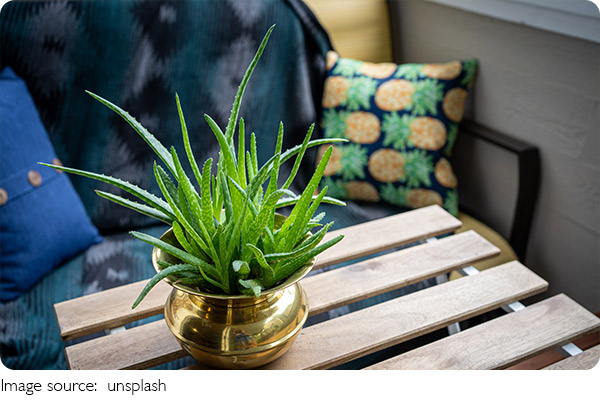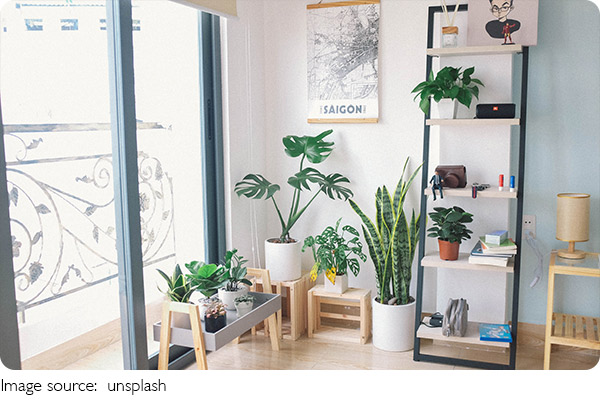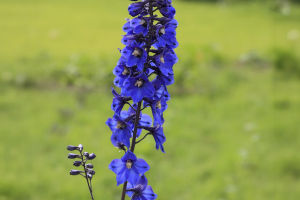Perfect Plants

Plants are a beautiful addition to any home, adding life and freshness to our spaces.
But if you're new to plant care or looking to expand your indoor garden, choosing the right plant can feel overwhelming.
One of the most important factors to consider when selecting a plant is the lighting in your home. Not all plants thrive under the same lighting conditions, so it's essential to choose plants that match your environment.
In this article, we'll help you understand how to select plants based on the different lighting conditions in your home, from low light to direct sunlight. Whether you have a sunny windowsill or a dimly lit corner, there are plants that will thrive in any space!
Understanding Lighting Levels
Before we dive into specific plants, let's first understand the different lighting conditions you may encounter in your home. There are three primary categories of light that can impact plant health:
1. Low Light: Areas that receive very little or no natural light, such as rooms with small or no windows, or spots far from a window.
2. Medium/Indirect Light: This is light that is not direct but still bright, like light that filters through curtains or reflects off walls. Rooms near windows but not in direct sunlight typically have this light.
3. Direct Sunlight: Areas that receive full sun throughout the day, like a south-facing windowsill or a space with clear, unfiltered light streaming in.
Choosing Plants for Low Light
If you're dealing with spaces that don't get much sunlight, don't worry! There are plenty of plants that thrive in low light conditions. These plants have evolved to adapt to shadier environments, making them perfect for darker corners or rooms with minimal natural light.
Best Low-Light Plants:
• Snake Plant (Sansevieria): One of the best plants for low light, snake plants can survive in almost any condition. They don't require much water or light, making them perfect for busy individuals.
• ZZ Plant (Zamioculcas zamiifolia): The ZZ plant is virtually indestructible. It can thrive in low light, and it's very forgiving when it comes to watering.
• Pothos (Epipremnum aureum): Known for its trailing vines, pothos can grow well in low light, though it prefers indirect light for faster growth.
• Peace Lily (Spathiphyllum): Peace lilies are known to thrive in low light and help purify indoor air. They also produce beautiful white flowers, making them a great decorative choice.
Medium Light Plants
Medium light conditions are often found near windows that aren't directly exposed to the sun or rooms with reflected light. In these areas, plants can get the right amount of light to flourish without being scorched by too much sun. These plants usually require a few hours of indirect sunlight throughout the day.
Best Medium Light Plants:
• Spider Plant (Chlorophytum comosum): This easy-to-care-for plant does well in medium light and even tolerates a little bit of neglect. It also produces small "babies" that can be propagated.
• Aloe Vera: Aloe vera prefers indirect light, making it ideal for spots away from direct sun. Plus, it's a low-maintenance plant that can be helpful for soothing minor burns and cuts.
• Philodendron: Philodendrons, known for their heart-shaped leaves, thrive in bright, indirect light. They're great hanging plants or can be placed on shelves where they can cascade down.
• Boston Fern (Nephrolepis exaltata): Ferns prefer indirect light and humidity, so placing them in a bathroom or near a kitchen window is ideal.
Choosing Plants for Direct Sunlight
If you have a sunny spot in your home, you're in luck! Many plants thrive in direct sunlight and can tolerate the warmth and brightness that comes with it. These plants often need at least six hours of direct sunlight each day to grow properly.
Best Plants for Direct Sunlight:
• Cacti: Cacti love sunlight, and they thrive in sunny windowsills. They require very little water, making them perfect for beginners or busy plant owners.
• Succulents: Like cacti, succulents thrive in full sun. Plants like the jade plant, echeveria, and aloe vera require direct sunlight to develop their characteristic rosette shapes.
• Lavender: If you want to add a touch of fragrance to your space, lavender loves direct sun and adds a pleasant scent to any room.
• Bougainvillea: If you have a sunny outdoor space like a balcony or patio, bougainvillea can make a colorful addition. It needs full sun and blooms beautifully when exposed to lots of light.
What About Artificial Lighting?
Even if your home doesn't have the best natural light, you can still grow beautiful plants by using artificial lighting. Many indoor gardeners use grow lights that simulate sunlight for plants that need a little extra boost. This can be especially helpful during the winter months when daylight is limited.
When using artificial lighting, make sure to place plants under the light for about 10–12 hours a day. LED or fluorescent grow lights are the most energy-efficient options, and they can be found in a variety of sizes and strengths.

Tips for Success
• Rotate Your Plants: If you have a plant that thrives in one type of light, try rotating it every few weeks to give it balanced light from all angles.
• Monitor Watering: Be mindful of the water requirements of your plants. Direct sunlight will cause the soil to dry out faster, while low-light plants may require less frequent watering.
• Watch for Signs: If your plant's leaves start turning yellow or brown, it could be a sign that it's getting too much or too little light. Adjust its placement accordingly.
Conclusion: The Right Plant for Every Light
Choosing the right plant for your home's lighting situation is key to successful indoor gardening. Whether you have bright, direct sunlight or a low-light nook, there are plants that will thrive in any environment. Remember to match the plant's light requirements with the lighting available in your home, and you'll have happy, healthy plants in no time!
Have you found the perfect plant for your space yet? Share your plant picks with us in the comments below, and feel free to ask any questions about indoor plant care!
-
 Growing DelphiniumsGardeners Stunned! This Banned Delphinium Method Creates Breathtaking Blooms Overnight!
Growing DelphiniumsGardeners Stunned! This Banned Delphinium Method Creates Breathtaking Blooms Overnight! -
 Turtle Choice GuideLand Turtle or Water Turtle? Discover Which One Fits Your Lifestyle Best Before Buying!
Turtle Choice GuideLand Turtle or Water Turtle? Discover Which One Fits Your Lifestyle Best Before Buying! -
 Behavior Makes DifferenceHow can we use behavior to help animals live calmer, happier lives? Let's explore!
Behavior Makes DifferenceHow can we use behavior to help animals live calmer, happier lives? Let's explore!